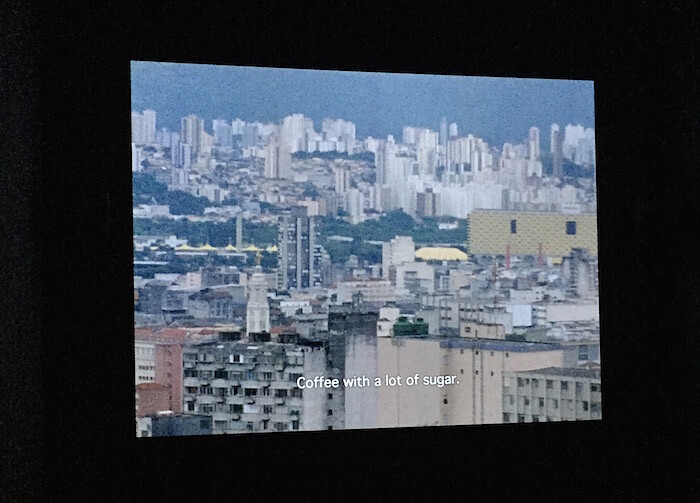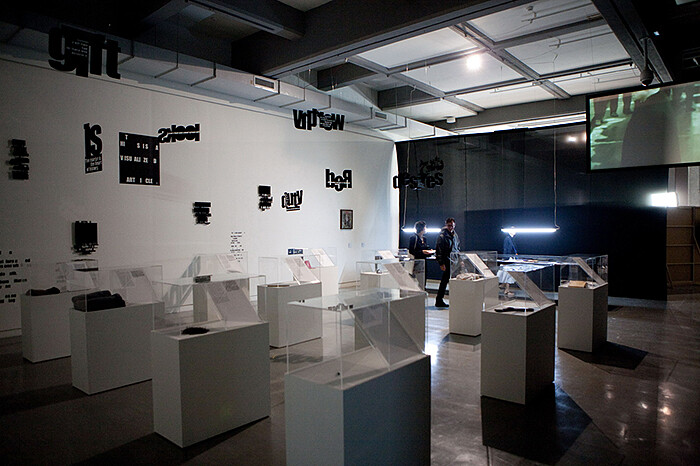Categories
Subjects
Authors
Artists
Venues
Locations
Calendar
Filter
Done
January 22, 2019 – Review
“Post-Nature—A Museum as an Ecosystem”
Tess Edmonson

What will come after what we know to be the twilight years of a livable earth? Though this question is implied in the title of “Post-Nature,” this edition of the Taipei Biennial, curated by Mali Wu and Francesco Manacorda, the exhibition itself offers impressions of natural life in the present, on the precipice of an unnamable future.
Alongside the biennial’s artists are non-artists—writers, documentary filmmakers, environmental groups, activist organizations, scientists, and designers—proposing the twinned dissolution of the boundaries between art and non-art, human and non-human. This provocation makes the exhibition a compelling vehicle by which to engage with theorists of the Anthropocene, and yet poses difficulty for those who think that art’s difference from other discourses is also what makes it good.
In thinking about what the environment means, or what it means to exhaust the earth, I return to Timothy Morton’s concept of hyperobjects: “things that are massively distributed in time and space relative to humans.” There’s something of the Romantic conception of the sublime in hyperobjects in that they exceed the scale of perception, a resonance Morton inscribes in his book with an epigram from Romantic poet Percy Bysshe Shelley: “the awful shadow of some unseen power.”
In Taipei, the shadow …
September 13, 2016 – Review
“Gestures and Archives of the Present, Genealogies of the Future: A New Lexicon for the Biennial,” Taipei Biennial 2016
Wendy Vogel

The title of the tenth Taipei Biennial, “Gestures and Archives of the Present, Genealogies of the Future,” includes everything but the term hammered throughout the exhibition: history. Curated by Corinne Diserens, this biennial departs from the 2014 edition helmed by Nicolas Bourriaud on the theme of accelerationism. Where Bourriaud’s apocalyptic-yet-seductive exhibition meditated on humanity’s impact on the environment, with a large contingent of rising-star artists utilizing high-tech processes, this year’s largely monochromatic show returns to such concerns as documentary, spirituality, and the legacy of colonialism. Though not explicitly stated, this biennial engages dialogues about identity currently taking place in the institutional art world.
Diserens, in her curator’s statement, describes her methodologies as “performing the architecture, performing the archive, performing the retrospective.” The second point is most salient: artists’ creative use of archives is the exhibition’s through line. But the architecture of the museum itself isn’t performed so much as left bare: a stage for other gestures to accumulate. The third phrase nods to Retrospective (2012–ongoing), a work by choreographer Xavier Le Roy re-presenting his past dances, that will only take place in the galleries this December and January. The exhibition, occupying two of the Taipei Fine Arts Museum’s three floors, represents …
September 15, 2014 – Review
"The Great Acceleration: Art in the Anthropocene"
Laura McLean-Ferris

“The Great Acceleration: Art in the Anthropocene,” curated by Nicolas Bourriaud, casts human subjects as both increasingly ghostly, stressing limitations and finitudes, as well more aligned with the organic, strange, and sensory. In other words: both more dead and more alive. These qualities have been thrown into relief by the ascendance of the machinic technologies and algorithmic logics that have come to condition much of our activity and attention. Expanding on these issues, the biennial, held solely at the Taipei Fine Arts Museum, features 52 artists and collectives, finely installed. As one might expect from Bourriaud, known for coining terms and corralling practices such as “relational aesthetics,” “postproduction,” and “altermodernism,” artistic approaches, rather than particular geographies, histories, or politics, connected the works in the exhibition.(1)
Formosa Decelerator (2014), an installation of hammocks linked in an octagonal structure with a tea service at the center, by the Rio de Janeiro collective Opavivará, opens the show. This is a mistake, as this convivial, relational work jarred with the cool, anxious tone of the rest of the works. Curatorially, however, it forms one side of an introductory quadrant around the museum’s central courtyard, framed by glass walls, behind each, it seems, a structural, industrial …
October 8, 2012 – Review
9th Shanghai Biennale and 8th Taipei Biennial
Carol Yinghua Lu

“Modern Monster/Death and Life of Fiction”: Taipei Biennial 2012
September 29, 2012–January 1, 2013
“Reactivation”: The 9th Shanghai Biennale 2012
October 2, 2012–March 31, 2013
Anselm Franke, curator of the Taipei Biennial 2012, once remarked that art is a specialized language that shouldn’t be downplayed for popular appeal. True to his ideals, nearly all the works that filled the three-floor building of the Taipei Fine Arts Museum required a certain degree of intellectual engagement from the viewers, while offering little visual sensation. Nonetheless, it was a mesmerizing experience going through the entire exhibition, which contained so many vitrines and archival displays that it could have easily been mistaken for an ethnographical exhibition. Indeed, the exhibition was an in-depth study of a broad spectrum of human histories, both factual and fictional ones.
Citing Taiwanese art historian David Der-wei Wang’s book The Monster That Is History, in which history itself is compared to the ancient Chinese monster Taowu, Franke sought ways to give form to this indefinable being. He proposed that Taowu is “a possible common experience of all modernity.”
Hence, in the works of the 40-plus artists in the biennial, history is narrated, described, imagined, re-examined, recontextualized, recreated, and rewritten—the hybridity of this monster knows no bounds. …